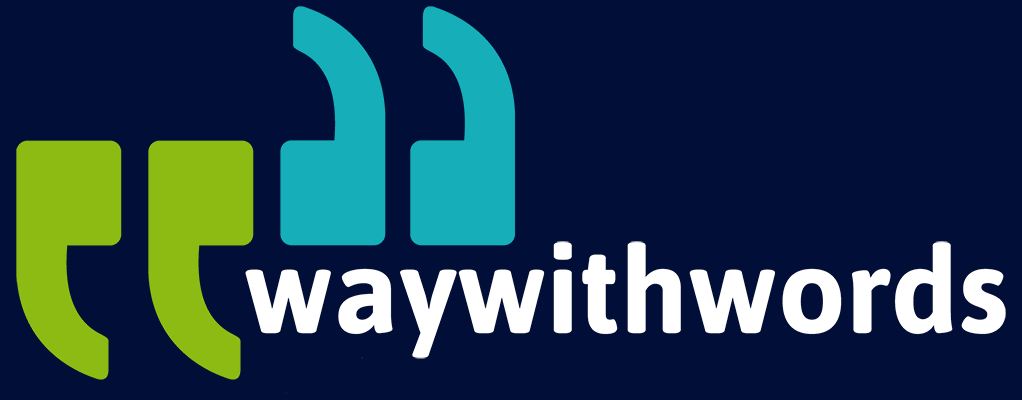What Role Does Speech Data Play in Accessibility Tech?
Speech Technology That Transforms How People Engage With The World
The ability to interact through speech has become not just a convenience, but a necessity. From voice assistants and transcription tools to hearing aids and communication devices that also interpret paralinguistic emotions, speech technology has transformed how people engage with the world. Yet the full promise of accessibility relies on one crucial component: speech data.
Speech data — the recorded and annotated voices, accents, and patterns of human communication — forms the foundation for developing inclusive, accessible technologies. Without diverse and representative datasets, accessibility tools risk excluding the very individuals they aim to empower. This guide explores the vital role that speech data plays in accessibility tech, from its design principles and ethical considerations to its technical challenges and measurable impacts.
Inclusive Design Foundations
At the heart of accessibility lies the principle of inclusion. Inclusive design ensures that technologies work effectively for people of all abilities, backgrounds, and speech characteristics. To achieve this, the underlying speech data must capture the real-world diversity of human expression.
Speech varies significantly across regions, languages, and accents. Within any given language, pronunciation, intonation, and rhythm can differ widely. Moreover, individuals with speech impairments — whether due to physical conditions such as cerebral palsy, neurological disorders like Parkinson’s, or developmental differences such as autism — often produce speech patterns that differ markedly from the “standard” voice data typically used to train AI models.
When datasets fail to include these variations, the result is predictable: speech technologies that perform poorly for those outside the dominant demographic. For instance, a voice-controlled assistant may struggle to understand users with strong regional accents, or a transcription system may misinterpret speech affected by stuttering or aphasia. These errors are not mere inconveniences — they reinforce exclusion and limit independence.
To build equitable accessibility tools, developers must collect representative speech data across:
- Accents and dialects within each language.
- Speech impairments and atypical speech patterns.
- Multilingual and code-switching speech, especially in diverse regions like Africa.
- Different ages and genders, to balance acoustic variability.
Inclusive voice technology depends on data that reflects how people truly speak, not an idealised or simplified version. Only through deliberate and ethical data collection can we ensure that accessibility tools are genuinely universal.
Assistive Use Cases
Speech data drives a wide spectrum of assistive technologies, each addressing different accessibility needs. These innovations extend far beyond convenience — they restore communication, independence, and confidence for millions.
- Captioning and Live Transcription
Captioning tools convert speech to text in real time, enabling people who are deaf or hard of hearing to follow conversations, lectures, and media. Behind these systems are massive datasets of human speech, meticulously annotated to teach models how to transcribe accurately across accents, noise conditions, and emotional tones. Services such as live captioning for video calls or university lectures rely on this foundation of robust, multilingual speech data.
- Voice Control and Smart Interfaces
Voice control allows users to operate devices hands-free — crucial for those with mobility impairments or limited dexterity. From opening applications to adjusting home settings, commands must be recognised quickly and accurately. Here, assistive AI audio models trained on diverse datasets ensure that even atypical pronunciations or speech rhythms are correctly understood.
- AAC (Augmentative and Alternative Communication)
AAC devices empower individuals who cannot rely on speech alone, such as those with severe motor impairments or nonverbal conditions. Speech data plays a dual role: it powers the speech synthesis used by these devices and also helps train recognition systems for personalised, adaptive communication. For example, a user’s unique voice signature can be modelled from limited samples, allowing their digital voice to retain a sense of identity.
- Hearing Support
Advanced hearing aids and cochlear implants now integrate machine learning models that separate voices from background noise and adjust sound clarity dynamically. These systems depend on speech datasets recorded in real-world acoustic environments — bustling cafés, busy classrooms, windy streets — to train algorithms that replicate the complex ways human hearing adapts to sound.
In each of these use cases, accessibility improves when the underlying speech data mirrors the diversity of human voices. The greater the variation in the dataset, the better the performance for everyone — including those who were historically marginalised by earlier generations of technology.
Data Ethics and Consent
While accessibility depends on diverse data, its collection raises profound ethical questions. Voices are not anonymous by nature; they carry identity, emotion, and sometimes vulnerability. Building inclusive datasets therefore requires strict ethical frameworks to ensure privacy, consent, and agency.
Participants must be fully informed about:
- How their speech data will be used.
- Whether it will be shared with third parties.
- What measures are in place to protect anonymity and data security.
- The right to withdraw participation at any stage.
Ethical data collection must also respect community ownership — particularly when involving minority or endangered languages. Too often, data gathered from underrepresented groups has been used commercially without fair compensation or acknowledgment. Responsible organisations now follow the principles of informed consent and data sovereignty, ensuring that communities benefit from the technologies built using their voices.
Furthermore, accessibility datasets often contain sensitive or personal speech, such as medical or emotional communication used in therapy contexts. Developers must implement robust security measures, including encryption, controlled access, and data minimisation practices to prevent misuse.
Ultimately, ethics in speech data is not a compliance checkbox — it is an ongoing commitment to respecting human dignity while advancing technological inclusion.

Technical Challenges
Despite remarkable progress, developing accessible speech technologies remains technically demanding. The human voice is extraordinarily complex, shaped by physiology, environment, and emotion. For accessibility-focused AI, these complexities become even more pronounced.
- Noisy Environments
Real-world audio is rarely pristine. Background chatter, overlapping voices, and environmental noise interfere with recognition accuracy. To address this, researchers use noise-augmented datasets, training models on speech recorded in varied acoustic settings to improve resilience in unpredictable conditions.
- Atypical Speech and Sparse Data
Atypical speech — including slurred, slow, or variable patterns — is underrepresented in most corpora. Collecting sufficient samples for rare conditions such as amyotrophic lateral sclerosis (ALS) or dysarthria is challenging due to small participant pools and privacy sensitivities. Here, transfer learning becomes invaluable: models pre-trained on large general datasets are fine-tuned on smaller, condition-specific samples to improve performance.
- Multilingual and Code-Switching Complexity
In multilingual contexts, such as much of Africa, people often code-switch between languages within a single sentence. Traditional speech models trained on monolingual data struggle to interpret these fluid transitions. Researchers now design multilingual acoustic models and context-aware transcription systems capable of recognising and blending linguistic boundaries dynamically.
- Bias and Evaluation
Another challenge lies in measuring fairness and bias. A model that performs well in English may fail in isiZulu or French Creole. Comprehensive evaluation metrics must therefore include language-specific accuracy, demographic performance comparisons, and error-type analysis to ensure that no group is systematically disadvantaged.
Overcoming these challenges demands interdisciplinary collaboration between linguists, engineers, and communities — blending technological innovation with cultural understanding.
Impact Measurement
How do we know whether speech technology is truly accessible? Measuring impact requires more than user numbers or performance metrics. It demands an evaluation of equity, usability, and empowerment.
- Accessibility Standards
Developers can align with established frameworks such as the Web Content Accessibility Guidelines (WCAG) and ISO standards for accessible ICT. These frameworks define benchmarks for usability across sensory, cognitive, and motor domains. Incorporating these standards early in product design ensures that accessibility is not an afterthought but a guiding principle.
- User Testing and Co-Design
Authentic impact arises when individuals with disabilities are involved from the start. Co-design workshops and user testing with diverse participants help identify real-world barriers and refine AI performance. Feedback loops should remain active after product launch to ensure ongoing improvement as speech patterns, devices, and cultural contexts evolve.
- Policy and Inclusion
Governments and NGOs play an important role in sustaining accessibility innovation. Policy support, funding for dataset creation in low-resource languages, and open data initiatives all contribute to levelling the field. Accessibility should not depend on market size but on human rights.
- Long-Term Maintenance
Speech technology models degrade over time as new expressions, slang, and devices emerge. Sustainable accessibility therefore requires continuous retraining with fresh, ethically sourced data. Maintenance is not merely a technical task — it reflects a lasting commitment to inclusivity.
The ultimate measure of success is not technological sophistication but human connection: the ability of every individual to communicate, understand, and participate fully in society.
Final Thoughts on Speech Accessibility Datasets
Speech data is far more than an input for machines; it is a reflection of our collective voices, identities, and experiences. In accessibility technology, it serves as both the medium and the message — the bridge that connects people to tools that enhance independence, equality, and dignity.
When collected responsibly and used inclusively, speech data transforms lives. It powers technologies that listen better, respond more intuitively, and respect the full range of human diversity. The future of accessibility will not be determined solely by algorithms, but by how faithfully those algorithms represent and serve the people behind every voice.
Resources and Links
Wikipedia: Assistive Technology – An overview of assistive technologies that enhance the functional capabilities of individuals with disabilities, including communication aids, adaptive devices, and accessibility standards shaping global inclusion.
Way With Words: Speech Collection – Way With Words provides specialised speech data collection solutions for machine learning and artificial intelligence. Their service focuses on ethically sourced, high-quality voice datasets — including underrepresented languages and diverse speech types — to help organisations build inclusive and accessible speech technologies worldwide.
